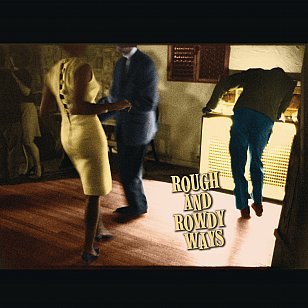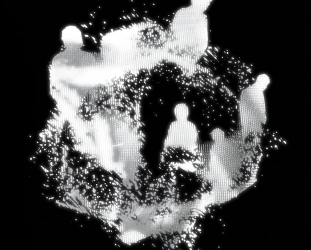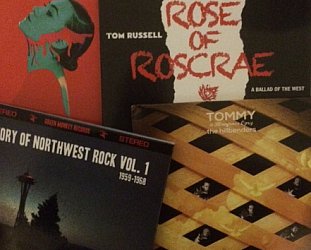Graham Reid | | 2 min read

From time to time Elsewhere will single out a recent release we recommend on vinyl, like this one . . .
.
When Elsewhere interviewed Thurston Moore of Sonic Youth 30 years ago (was it really that far back?) something came up in passing: Sonic Youth's cover of George Harrison's Within You Without You on an indie-rock Beatles tribute album Sgt Pepper Knew My Father.
“We chose Within You Without You because Harrison was the coolest Beatle,” he said. “Plus it was the first song on side two and we were guaranteed a good showing.”
And right there we have the reason for vinyl records: the placement of songs, how they run together (or don't), how the first side of an album ends, what the second side means in terms of a kind of physical and emotional restart when you get up to turn the record over . . .
Or wonder, “Jeez, where to now?” as after the Beatles' extraordinary Tomorrow Never Knows which closed Revolver, even though it was the first song recorded for that album.
Vinyl makes you think about things like that. It is a more interactive delivery system, and it comes with cover art, liner notes and such which a cheap stream simply doesn't.
Little wonder people who aren't actually engaged with music allow Spotify to choose their listening for them. Thinking for yourself is hard, huh?
Which is also why Elsewhere picks out Recommended Records from time to time, albums you will appreciate more on vinyl.
Paul Weller current double-vinyl On Sunset (our most recent Recommended Record) is a case in point: It opens with a statement of intent in Mirror Ball which touches on the soul and experimentalism which will follow, the second record opens with the lovely title track and the album ends on a glorious Bowie-like ballad with strings . . .
On Sunset on vinyl in a gatefold sleeve with lyrics is a proper listening experience.
 Bob Dylan has often understood vinyl: an album with one side electric and the other acoustic (Bringing It All Back Home which kicks in with the groundbreaking Subterranean Homesick Blues and starts the second side with Mr Tambourine Man).
Bob Dylan has often understood vinyl: an album with one side electric and the other acoustic (Bringing It All Back Home which kicks in with the groundbreaking Subterranean Homesick Blues and starts the second side with Mr Tambourine Man).
Or opening with the newly minted classic Like a Rolling Stone and closing the second with a free-form tour-de-force of the 11 minute Desolation Row (Highway 61 Revisited).
Or starting with a party (the ramshackle Rainy Day Woman No 12 and 35 of “everybody must get stoned” and closing by devoting a whole side to one song (the 11 minute-plus Sad Eyed Lady of the Lowland) on side four of the double album Blonde on Blonde.
Dylan does something similar with Rough and Rowdy Ways across a double vinyl edition: it opens with the warning/statement-of-the-obvious in the terrific I Contain Multitudes -- it sets up the idea of a character full of contradictions -- and gives over the whole of the fourth side to the majestic, 16-minute journey back and forth through time and imagery of Murder Most Foul.
He closes the first side with My Own Version of You (a weird and gloomy, Waitsean Dr Frankenstein-cum-philosophical poem), closes the second with the bluesy Goodbye Jimmy Reed (a close cousin to Leopardskin Pillbox Hat with more pertinent, contemporary references) opens the third with the reflective ballad Mother of Muses and -- bracketing the bluesy Crossing the D+Rubicon -- closes it in similar fashion with Key West: Philosopher Pirate which, like a similar Van Morrison rumination, relaxes you before . . . .
That final side of Murder Most Foul.
This is how a double album should play out through sonic texture, similarity and difference . . . and why Rough and Rowdy Ways is our Recommended Record right now.
Like Blonde on Blonde, this is a double album for the decades to come.
Elsewhere reviewed Rough and Rowdy Ways at length here, as well as separate reviews of I Contain Multitudes and Murder Most Foul.
For other Recommended Record reviews see here.





post a comment